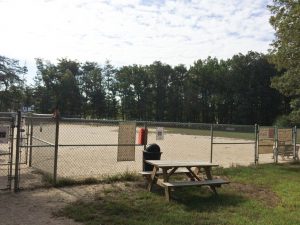Dog Park Pros & Cons
Most dog owners want the best for their family pet. This may include lavish outfits, the finest food and training. Of course, allowing your dog to have ‘play-time’ and socialization at a local dog park is generally a decision that should be made in the raising of your four legged friend.
There are many positive reasons to attend a dog park as well as negatives. Although the topic has multiple sides, the decision should not be made lightly and always with a thorough understanding of the environment you will be placing your family member in if you decide to attend any free range dog park.
The following is meant to outline a few common concerns as well as the benefits and disadvantages to help with the decision making process with your furry friend.
The two most common worries people have with visiting a dog park are contracting illness or disease and the potential for an aggressive encounter.
Contractible Illness or Disease
While many pet owners believe in pet inoculations this is not the case with every dog owner. Illness or disease can be spread to your pet from an non-vaccinated dog. Common ways include contaminated feces, bite from infected animal, paws, toys, clothing, food and water dishes toys and bedding. Insects and rodents can also provide a means for disease spread.
Your best bet is to ensure your dog is always current on his/her core vaccinations. These core vaccines are considered vital to your health of your canine:
- Rabies
- Distemper
- Canine Parvovirus
- Canine Hepatitis
Non-core vaccines are given based on your dog’s exposure risk. A semi-annual Bordetella shot is a common requirement for many breeders, kennels and dog walkers and is very similar to a human Flu shot. Here are some recommended non-core vaccines:
- Bordetella bronchiseptica
- Borrelia burgdorgeri
- Leptospira bacteria
Dog Altercations
While any dog and particularly certain breeds are known to have pack dominance issues, many animal behaviorists would agree that most dogs don’t display the need to dominate or fight other dogs. In most cases, dogs find their ‘place’ in a group of dogs very quickly and demonstrate their boundaries with just a few sniffs, a tail-wag and body positioning.
If you have a very relaxed dog that has never been around a large crowd of dogs, consider introducing them slowly. A few visits outside the fence to get them accustomed to the environment and the wide array of smell and sounds will help. Slowly introduce your dog to smaller groups and judge how playful and confident he/she is around the others. In any case, you should allow your dog a chance to become accustomed to the environment before giving them full access to run and play.
Always remember that your animal is your responsibility and if you are worried about the group of dogs in the dog park, then skip that day of play or find another dog park to visit until you develop an understanding of your dog’s confidence level.
Consult an experienced dog trainer or animal behaviorist before introducing a ‘problem dog’ into an environment that may become disastrous for your or another family’s pet.
Dog Park Advantages
Some bonuses for visiting your local dog park are opportunities for socialization, play-time, exercise and stress release. Most dogs thrive on routine, and the daily or weekly trip to the dog park may be exactly what your dog needs to solve many unwanted behaviors around the home or health problems.
Another key component is the opportunity to judge and train several behavioral issues that your dog may have. This includes, reactivity (barking, growling) at other dogs or people, excessive pulling while on leash, biting or chewing on people and objects, or health and weight control issues. Using the playtime and socialization your dog receives at a dog park may be the extra step your furry friend needs to solve some of these common issues.





